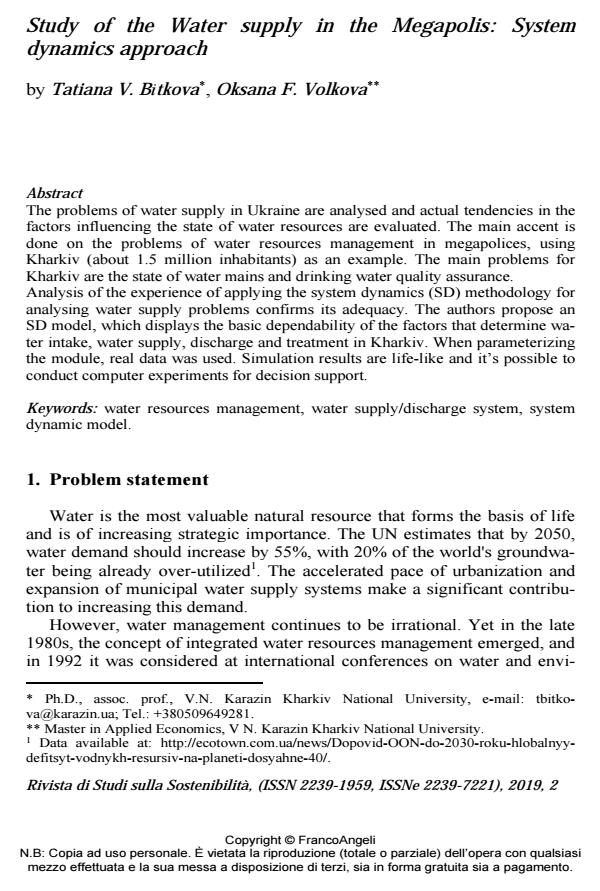Study of the Water supply in the Megapolis: System dynamics approach
Titolo Rivista RIVISTA DI STUDI SULLA SOSTENIBILITA'
Autori/Curatori Tatiana V. Bitkova, Oksana F. Volkova
Anno di pubblicazione 2020 Fascicolo 2019/2
Lingua Italiano Numero pagine 16 P. 109-124 Dimensione file 418 KB
DOI 10.3280/RISS2019-002009
Il DOI è il codice a barre della proprietà intellettuale: per saperne di più
clicca qui
Qui sotto puoi vedere in anteprima la prima pagina di questo articolo.
Se questo articolo ti interessa, lo puoi acquistare (e scaricare in formato pdf) seguendo le facili indicazioni per acquistare il download credit. Acquista Download Credits per scaricare questo Articolo in formato PDF

FrancoAngeli è membro della Publishers International Linking Association, Inc (PILA)associazione indipendente e non profit per facilitare (attraverso i servizi tecnologici implementati da CrossRef.org) l’accesso degli studiosi ai contenuti digitali nelle pubblicazioni professionali e scientifiche
The problems of water supply in Ukraine are analysed and actual tendencies in the factors influencing the state of water resources are evaluated. The main accent is done on the problems of water resources management in megapolices, using Kharkiv (about 1.5 million inhabitants) as an example. The main problems for Kharkiv are the state of water mains and drinking water quality assurance. Analysis of the experience of applying the system dynamics (SD) methodology for analysing water supply problems confirms its adequacy. The authors propose an SD model, which displays the basic dependability of the factors that determine water intake, water supply, discharge and treatment in Kharkiv. When parameter-izing the module, real data was used. Simulation results are life-like and it’s possi-ble to conduct computer experiments for decision support.
Parole chiave:Water resources management, water supply/discharge system, system dynamic model.
Tatiana V. Bitkova, Oksana F. Volkova, Study of the Water supply in the Megapolis: System dynamics approach in "RIVISTA DI STUDI SULLA SOSTENIBILITA'" 2/2019, pp 109-124, DOI: 10.3280/RISS2019-002009